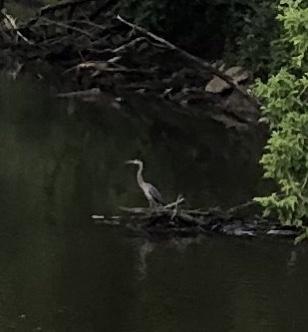The Cornell Lab Bird Academy › Discussion Groups › Joy of Birdwatching › Activities: Exploring Birds
-
<span style="-webkit-tap-highlight-color: rgba(0, 0, 0, 0);">I live in Whitefish Bay, Wisconsin and I </span>get a lot of American Goldifinches on my feeder along with sparrows and house finches. Occasionally we will see a cardinal and there are a pair of mourning doves that will eat the seeds the other birds spill on the ground. This white bird appears to be a sparrow of some sort but it is all white. Is it possible that it is an albino sparrow?


-
Hi all, Very much enjoying this little intro course to birds. I've been relatively successful in IDing the species around me and have found the BIRDNet tool really helpful. The other day, I came across this feather (see image) by my bird feeder. The 'owner' was not observed and haven't seen any other like it since. Any ideas?? I live in the Hamilton region of Southern Ontario. I'd love to hear your thoughts!

-
ElizabethBird AcademyThat's a tail feather from a yellow-shafted northern flicker (Colaptes auratus). Very cool!
-
-
I live in San Diego and there are a few Anna’s Hummingbirds, I believe, (thanks Merlin App) that come by my front porch every day to peep the flower scene. I typically only see one at a time, but for a short while in -maybe- late May or early June there were upwards of six at a time! It was at that point I really began to enjoy their movements, sounds (namely the ‘buzzing’ of their wings), and those colors! A flash of green in the sunshine is really magnificent and is almost always cause for a pause. I haven’t completely figured out how to stay with their movements while using binoculars, but I am eager to start catching them up close.
-
I live in the Great Basin High Desert area. While it is best to get out and take a walk up in the hills, or along the river, my backyard serves as my bird watching area during these unpredictable times. I'm trying to plant flowers that attracts bees, butterflies and hummingbirds. Birds are attracted to the protective trees. While it is not a large yard, I can easily find birds from three groups, (question 2.). Mourning Doves flew in to explore. Two Hummingbirds came to explore the Silvia and Penstemon. However, I think some large Carpenter Bees rob them of some of the nectar. Rounding out the list are the songbirds Robins and my fave Scrub Jays and their youngsters. They are here all year and provide much entertainment.
-
I explored the Wall of Birds and immediately found one of my backyard favorites, the northern cardinal. Over 45 years ago I noticed a flock of male cardinals around a crabapple tree in my backyard as I watched from my kitchen window. Next day I placed hung a bird feeder from a branch of that tree and filled it with sunflower seeds. The cardinals found it and became regular visitors. I saw as many as 40 at a time in the late afternoon. That event made me become a birdwatcher. Over the years I have known many cardinal couples who have come to my feeders. I have noticed that if the female is around there is usually a male guarding her and discouraging other males from approaching. Several years ago I witnessed a sad event in my yard. In the late afternoon a female cardinal hit a picture window (despite the reflectors that hang from the inside of that window). Sadly she was dead instantly. He partner came looking for her and stayed with her, chirping and hopping around her body until the there was almost no light left. My husband and I were so sad to see his distress. It may seem silly but next morning we buried her in one of our flower beds.
-
Forty cardinals! Where abouts do you live? As a kid, it was a huge thing to see even one up here in Canada, but we were told that with a warming climate they were coming further north. I love those birds too. But they are still fairly rare here.
-
-
One of the birds I picked in the Wall of Birds was the Oilbird. Where I come from,Venezuela, they are called Guácharo and are an important part of our nature culture (there is even a Guácharo monument!) The Guácharo Cave, considered the largest in Venezuela, is located in the Guácharo National Park. It was explored by Alexander von Humboldt in 1799. I am attaching a picture of the cave's entrance and of the monument.

 I now live in Lima, Peru, another great place to watch birds, however this is my first ever experience in bird watching. I took a stroll in a park near where I live in Lima and saw three birds that I managed to identify (I think) with the help of the Melin App: a group of Saffron Finches, two Long-Tailed Mockingbird, and a Vermilion Flycatcher. The Vermilion Flycatcher and the Blue-grey Tanager are my favorite birds. Although, I haven't seen Blue-grey Tanagers lately.
I now live in Lima, Peru, another great place to watch birds, however this is my first ever experience in bird watching. I took a stroll in a park near where I live in Lima and saw three birds that I managed to identify (I think) with the help of the Melin App: a group of Saffron Finches, two Long-Tailed Mockingbird, and a Vermilion Flycatcher. The Vermilion Flycatcher and the Blue-grey Tanager are my favorite birds. Although, I haven't seen Blue-grey Tanagers lately. -
(1) Growing up in TN, my parents always fed the birds. Hands down I had to vote for the number one Cardinal as that bird is the first one I remember as a child and is still a number one beauty decades later. (2) A move to OH, and a home that backs up to a land trust area, we enjoy various groups of birds from songbirds, raptors, owls, woodpeckers, and doves...lots of doves. This year we were blessed with a barred owl family, Carolina wrens, a red tailed hawk family for the 4th year and most varieties of woodpeckers. (3) A bird that deserves a shout out is the Purple Martin. This is my 5th year as a PUMA colony landlord at our township garden. Who can’t love a bird that flies back and forth to South America each year to lay eggs, hatch their young and fly back? They are tough, personable, have a lovely chirp/chatter and don’t mind people hanging out with them. This year the colony has fledged 104 to send back to South America and some of them will return to our colony next year...we hope.
-
 Paradise Tanager
I find that the Paradise Tanager is my favorite, being colorful, beautiful, and, I LOVE TANAGERS!!!
My second favorite is the Galapagos Penguin, beacause:
1: It's endangered
2: It's beautiful (like all birds are, if you look at them in the right way)
3: It is the only penguin that lives above AND near the Equater
Paradise Tanager
I find that the Paradise Tanager is my favorite, being colorful, beautiful, and, I LOVE TANAGERS!!!
My second favorite is the Galapagos Penguin, beacause:
1: It's endangered
2: It's beautiful (like all birds are, if you look at them in the right way)
3: It is the only penguin that lives above AND near the Equater
 Galapagos Penguin
NightwingMoonwatcher
Galapagos Penguin
NightwingMoonwatcher -
I spend the summers right near the beach of Lake Michigan. This summer I really appreciated gulls at the beach. Most people find them annoying and chase them away, but I began to watch them. They are entertaining in the way they watch the beach looking for spilled crackers or cookies. I noticed that they read people trying to get a sense of who might share a snack and who will chase them away. I also love great blue herons and ruby-throated hummingbirds. They are so different and by watching them feed, I really get to know them. There are the slow, strategic movements of the heron and the quick fluttering of the hummingbirds. Because I feed the hummingbirds on my deck, I feel like I have a special relationship with them. They often hover right in front of my face and I wonder if they are thanking me for the nectar or asking me to refill the feeder.
-
Activity 1: I like the Osprey best because on the Wall of Birds it lives at the same place as I do, but also because there is a Osprey nest where I live and it it's so cool to watch the Ospreys fly around the nest and carry fish and other stuff to the young ones. Activity 2: On one of my walks through the park by my house, I saw Blue Jays, Northern Cardinals and Northern Mockingbirds, group: Songbirds. By a pond I saw Muscovy Ducks with a lot of ducklings and a Anhinga, grouped as Waterfowl. There was also a Great Blue Heron, some White Ibis, some Wood Storks and a Limpkin, group: Wading birds. Activity 3: It is really hard to pick a favorite, for there are about 10000 bird species in the whole world and I am supposed to narrow it down to one species?! I really like the Nanday Parrots with their loud calls and so cute relationships. Great Blue Herons are also really cool, as well as Red-Bellied Woodpeckers. But, if I have to pick a absolute favorite, it would be the Northern Mockingbird, because I always watch them in my yard, sometimes feeding young ones or fighting. And every time I come back to my house after a hike, two Northern Mockingbirds sit on the power lines, at the same spot every day.



-

 These are some of the birds in the neighborhoods, I have walked in. The Canada Goose, with one foot, was hopping and surviving. Foraging. Poor Thing.
And the SeaGulls are at the beach, drinking the water, and 'in a mingle.' I never knew they drank water like that, it looks interesting.
These are some of the birds in the neighborhoods, I have walked in. The Canada Goose, with one foot, was hopping and surviving. Foraging. Poor Thing.
And the SeaGulls are at the beach, drinking the water, and 'in a mingle.' I never knew they drank water like that, it looks interesting. -
Activity 1. The Wall of Birds is gorgeous! I fell in love with the Lilac-Breasted Roller found in East Africa. Lilac is my favorite color so that had something do with my choice. What I also love is the male Roller during breeding season will do aerobatic dives and rolls. It brought to mind the numerous Blue Angel airshows I have attended in which the pilots with their planes were doing what the Rollers do. Activity 2. This year I monitored a pair of Red Shouldered Hawks from The Raptors group for a couple of biological scientists doing a survey. I followed the hawks from nest building to the eventual hatching and fledging of 2 baby hawks. It was amazing! There is a Wildlife Refuge near me and there I recently observed a Downey Woodpecker, hard at work and from the Waterfowl Group, a beautiful Cinnamon Teal Duck. Activity 3. My favorite bird is the Western Tanager. It migrates through my neighborhood. I first noticed them due to the loud chatter coming from the tree tops near me. I think quarantine and the quietness around me made me more aware this year. The males are absolutely gorgeous with a red head, yellow body and black wing bars. They stay mainly in tree tops and when they are around there is a flutter of movement in the tree tops and flashes of yellow. I first thought that someone's pet bird escaped until I learned more about them. Such a beautiful bird!
-
One day when I was walking in a field beside a creek, a place I could let my dogs off the leash when we were out for a walk, I saw, at close range, a great blue heron (ardea herodias) rise up suddenly out of the creek bed. I didn't immediately know what it was--I'd seen them only from a distance before. I actually had the feeling of my heart rising in my chest. Since that day 15-20 years ago I've felt connected to these wonderful wading birds. I've seen them on the seashore, as in St. George Island, FL (below).
 This is a favorite photo of the great blue heron. I actually photographed several members of a group standing close to some people surf fishing. Herons are usually solitary fishers, but will take what human fishers by the water don't use.
A close relative of this heron is the great egret (ardea alba), a beautiful white wading bird. I live within a 2-hour drive of a place called Reelfoot Lake in northwest Tennessee, which is teeming with birds, from terns to bald eagles. Below, an egret.
This is a favorite photo of the great blue heron. I actually photographed several members of a group standing close to some people surf fishing. Herons are usually solitary fishers, but will take what human fishers by the water don't use.
A close relative of this heron is the great egret (ardea alba), a beautiful white wading bird. I live within a 2-hour drive of a place called Reelfoot Lake in northwest Tennessee, which is teeming with birds, from terns to bald eagles. Below, an egret.
 In recent decades, Reelfoot has become known for eagle-watching. A few bald eagles were wintering at the lake in the 60s and 70s. Now, there's an abundance of nesting pairs. Ospreys, too. Plenty of fish for both raptors and waders.
I live near Memphis, on the edge of the urban area, in a neighborhood with a lot of mature native trees. Plenty of deer, and a lot of birds I hear in my back yard, where the trees are dense around an intermittent creek that drains the area. It's hard to see them this time of year. But cardinals are abundant and their plumage make them easy to spot. I've been surprised 3-4 times in the 15 years I've lived here by hearing the calls of barred/hoot owls outside. I've immediately gone to sit on the back porch and listen to the back-and-for calls of one nearby and one distant owl. In fact there's a lot of bird music right here, and one of my goals is to acquire a much greater ability to identify birds by their songs and calls.
Jays, Red-tailed and red-shouldered hawks, sparrows, wrens, vireos, eastern bluebirds (often seen in pairs) are a few. There's a small lake in a park nearby where I ride around a half-mile track a few times in the course of a longer bicycle ride. I often see my beloved great blue herons, always solitary. And green herons make appearances there too, along with bluebirds. All of them are sources of delight to me. There must be at least a hundred species I have no idea of, so I have the joy of learning some of them to look forward to.
In recent decades, Reelfoot has become known for eagle-watching. A few bald eagles were wintering at the lake in the 60s and 70s. Now, there's an abundance of nesting pairs. Ospreys, too. Plenty of fish for both raptors and waders.
I live near Memphis, on the edge of the urban area, in a neighborhood with a lot of mature native trees. Plenty of deer, and a lot of birds I hear in my back yard, where the trees are dense around an intermittent creek that drains the area. It's hard to see them this time of year. But cardinals are abundant and their plumage make them easy to spot. I've been surprised 3-4 times in the 15 years I've lived here by hearing the calls of barred/hoot owls outside. I've immediately gone to sit on the back porch and listen to the back-and-for calls of one nearby and one distant owl. In fact there's a lot of bird music right here, and one of my goals is to acquire a much greater ability to identify birds by their songs and calls.
Jays, Red-tailed and red-shouldered hawks, sparrows, wrens, vireos, eastern bluebirds (often seen in pairs) are a few. There's a small lake in a park nearby where I ride around a half-mile track a few times in the course of a longer bicycle ride. I often see my beloved great blue herons, always solitary. And green herons make appearances there too, along with bluebirds. All of them are sources of delight to me. There must be at least a hundred species I have no idea of, so I have the joy of learning some of them to look forward to. -
Those are some amazing and gorgeous pictures you posted! The herons and egrets are some of my favorites too. It sounds like you must live not too far from where I am, in Florida. We are blessed with an abundance of shore birds and water birds here. Thank you for sharing your pictures.
-
-
Activity 1. I really enjoyed the Wall of Birds, but there are so many birds I decided to start with South America and just check out every bird. So far I especially like the marvelous Spatuletail Hummingbird because of color, the special tail, I would love to see them present when mating. I was impressed with the Three-Wattled Bellbird, never seen or heard of such a bird. I enjoyed the Long-tailed Manakin and would like to see them doing there leapfrogging flight. Activity 2. I went to the beach and I saw Brown Pelicans, Heermann’s Gulls, Western Gulls, Great-tailed Grackles, Rock Doves, and Tree Swallows. Activity 3. I have too many favorites and it changes depending on my encounter with the bird or birds. I have a fountain out in my front yard, and I often sit out trying to sketch the birds as they visit the fountain. I have House and Chipping Sparrows, House Finches, and once in a while a pair of American Goldfinch as well some Anna’s Hummingbirds.
-
Activity 1: Nope. I cannot choose a favorite, I love every single one. I think I went through half and gave them all hearts. Activity 2: We spotted a group of house finches and loads of Anna's hummingbirds. There was also a bird that looked like a cross between the house finch and a parrot. It was pretty far away and hard to get the details on, but its coloring was a kind of brown with a touch of green and had it had a parrot-like head and beak. We're SO CURIOUS about these two guys. We also see red-tailed hawks hunting every so often, which is pretty neat. Activity 3: It's hard to pick a favorite, but the hummingbirds give us the best look because we can watch them feed and interact with each other. They're so aggressive, they even fight with each other and the hornets. Sometimes they even fly up to face us and seem to be threatening us to go back inside. They observe my small dog (without attacking). They following him and look down at him as he wanders around the yard. It's wild!
-
Activity 1: Oilbird (lives in caves and uses echolocation), Red-Faced Mousebird (multiple females lay eggs in one nest), African Jacuna (females battle for nesting grounds, males incubate eggs and raise chicks), Wandering Albatross (spend most of their life in the sea, have salt glands). Activity 2: Songbirds (Shiny Cowbird/Mirlo Común) Raptors (American Kestrel/Cernícalo) Waterfowl (Cinnamon Teal/Pato Colorado) Activity 3: My favorite is a Croaking Ground Dove/Tortolita Quiguagua. My friends call it a frog-bird. Some of the funny croaking sounds it makes are Wow! Weird. It’s bigger than a sparrow, but smaller than a pigeon. It’s grayish-brownish in color with a bright yellow beak at its base. It freezes when feels threatened, which allowed me to touch them on many occasions. On the other hand, if you stand still, it will walk around you not even noticing your presence.

-
I really came to appreciate the motto "keep common birds, common" , especially while under house quarantine. I fell in love with a pair of mourning doves that called our pine tree home... each morning the first thing that came to mind was not coffee, but how are the birds, what are they doing, did the one egg hatch...I really got to appreciate the ordinary birds in my yard/neighborhood, something I definitely took for granted. Though not a colorful bird, grayish/brown- it has a distinct long tail and a call that I found soothing. Parents shared nesting / feeding duties- I was really surprised that during high winds the flimsy nest withstood the stress... I can't thank you all enough, for all these inexpensive courses and sharing your expertise (I attended a fabulous lecture at the lab on crows by Kevin...). I wrote poems about the birds I saw while home during those 4 months...and I never wrote poetry before...I have been drawing them also. I am now a more relaxed version, of me....Thank you!!

-
Before seeing the Shoebill on the Wall of Birds, I saw a stuffed-shoebill at the Lab or Ornithology, I thought is was fake...such an interesting looking bill perfect for a carnivore...it depends on the papyrus swamps in Eastern Africa (do not migrate) and are considered a vulnerable species -with estimates of approximately 3,000- 5,300 adults left in the world. Numbers are declining due to habitat loss, clearing for pasture, and agricultural burning. In Uganda, some are hunted because they are considered a bad omen. The wingspan can be up to 8 feet in length- once classified in the stork family, it looks prehistoric- check it out...
-
THE PELICAN and THE WOOD DUCK, are my favorites. THE PELICAN, because it has a mixture of strength and playfulness, in its' looks and style. THE WOOD DUCK, because it is unique and cool looking. It has a 'one of a kind,' profile and assortment of colors.
-
I love the Stellar's Jay! They have nested in our yard for the last few years, and I've learned that they are much quieter when they are nesting (their squawk can be annoying). I love watching the hatchlings leave the nest and walk about the area while learning to fly.

-
I noticed this with the Blue Jays here in Pennsylvania. We have always had noisy, raucous groups of them until last year when a pair nested here. They were completely quiet all summer .
-
-
I am following three birds we see around our home. The Ring-necked Pheasant, what I now know to be a Rufous Hummingbird and what appear to be a family of Song Sparrow living in a birdhouse. I have yet to capture their pictures.
-
1. I've visited Ithaca many times to see relatives. We always find our way to Sapsucker Woods and the Wall of Birds. My grandchildren were enthralled and they would love the interactive Wall on this site. I think the Asiatic Fairy Bluebird is lovely. Penguins are so amazing as are the walking birds such as emu. 2. I love red bellied woodpeckers with their red heads and noisy clucking around. I was trying to spot a mocking bird and discovered it was a brown thresher imitating a cardinal, twice. I loved to watch nuthatches at my previous resident. They fly so quickly and do Darth Vader imitations when being territorial. 3. Now my favorite neighborhood bird, though only as it passes through, are the swallowtail kites. They are such dramatically colored birds, white and black, and sail through the air using their swallowtails as rudders.
-
I just spotted two Ring-necked Pheasants on our fence but was too late with the camera! They were displaying and looked to be young males, from what I can tell, as the novice I am. They seemed to be practicing displays? Very excited to see them again and find out what they are up to. Great course so far!
-

 The three types of birds, are : Duck/Waterfowl. White Heron/Waterbird-Wading Bird. And the Shorebirds/Pipers.
The pictures were taken today, 8/6/20. I have noticed some birds are very flighty, and some are not. The Heron flew away after the pictures, but the ducks did not. -b.k. All these birds connected to the water, but differently.
The three types of birds, are : Duck/Waterfowl. White Heron/Waterbird-Wading Bird. And the Shorebirds/Pipers.
The pictures were taken today, 8/6/20. I have noticed some birds are very flighty, and some are not. The Heron flew away after the pictures, but the ducks did not. -b.k. All these birds connected to the water, but differently. -

Read More:
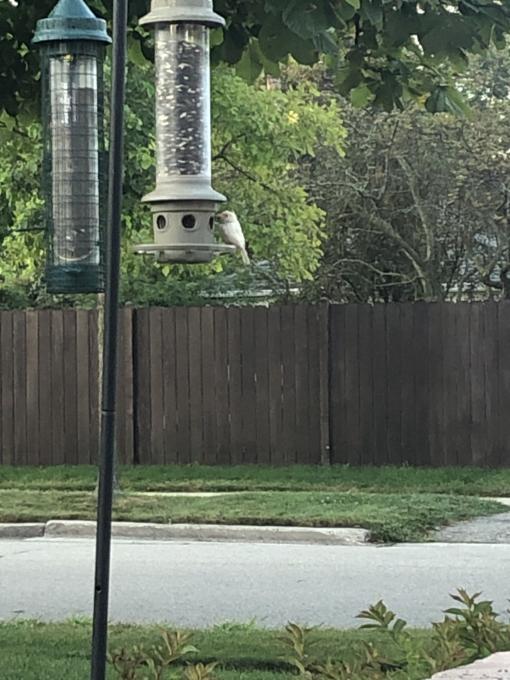
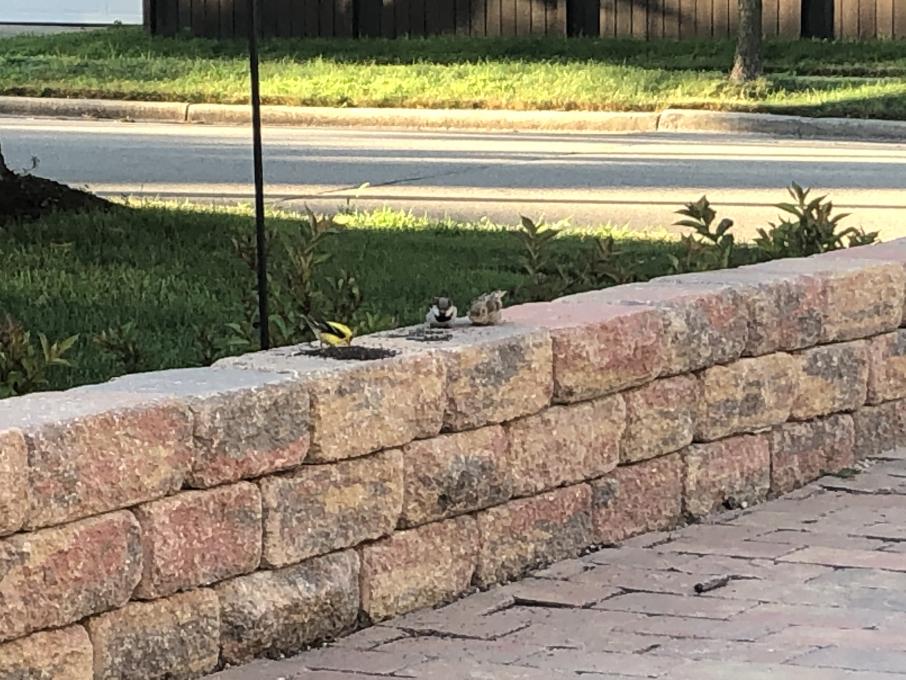
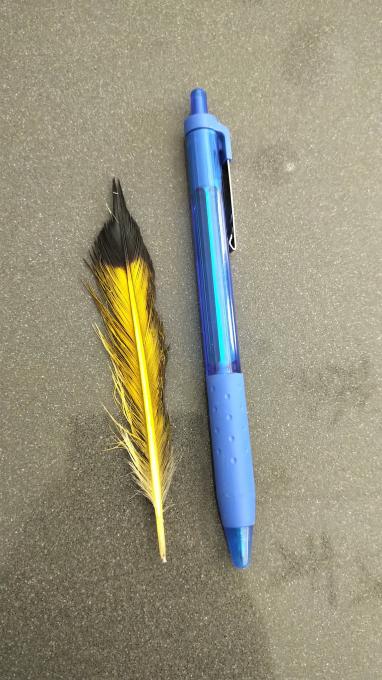
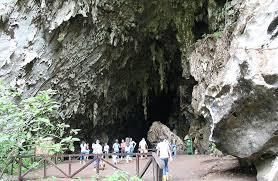
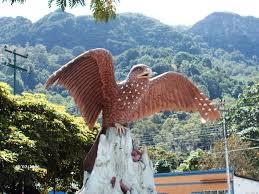 I now live in Lima, Peru, another great place to watch birds, however this is my first ever experience in bird watching. I took a stroll in a park near where I live in Lima and saw three birds that I managed to identify (I think) with the help of the Melin App: a group of Saffron Finches, two Long-Tailed Mockingbird, and a Vermilion Flycatcher. The Vermilion Flycatcher and the Blue-grey Tanager are my favorite birds. Although, I haven't seen Blue-grey Tanagers lately.
I now live in Lima, Peru, another great place to watch birds, however this is my first ever experience in bird watching. I took a stroll in a park near where I live in Lima and saw three birds that I managed to identify (I think) with the help of the Melin App: a group of Saffron Finches, two Long-Tailed Mockingbird, and a Vermilion Flycatcher. The Vermilion Flycatcher and the Blue-grey Tanager are my favorite birds. Although, I haven't seen Blue-grey Tanagers lately. 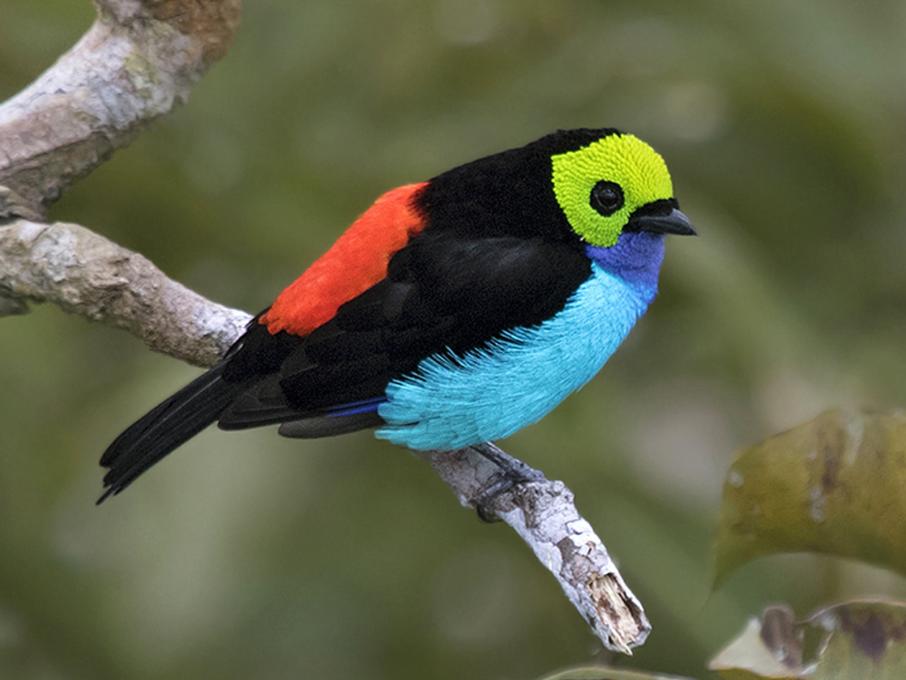 Paradise Tanager
I find that the Paradise Tanager is my favorite, being colorful, beautiful, and, I LOVE TANAGERS!!!
My second favorite is the Galapagos Penguin, beacause:
1: It's endangered
2: It's beautiful (like all birds are, if you look at them in the right way)
3: It is the only penguin that lives above AND near the Equater
Paradise Tanager
I find that the Paradise Tanager is my favorite, being colorful, beautiful, and, I LOVE TANAGERS!!!
My second favorite is the Galapagos Penguin, beacause:
1: It's endangered
2: It's beautiful (like all birds are, if you look at them in the right way)
3: It is the only penguin that lives above AND near the Equater
 Galapagos Penguin
NightwingMoonwatcher
Galapagos Penguin
NightwingMoonwatcher 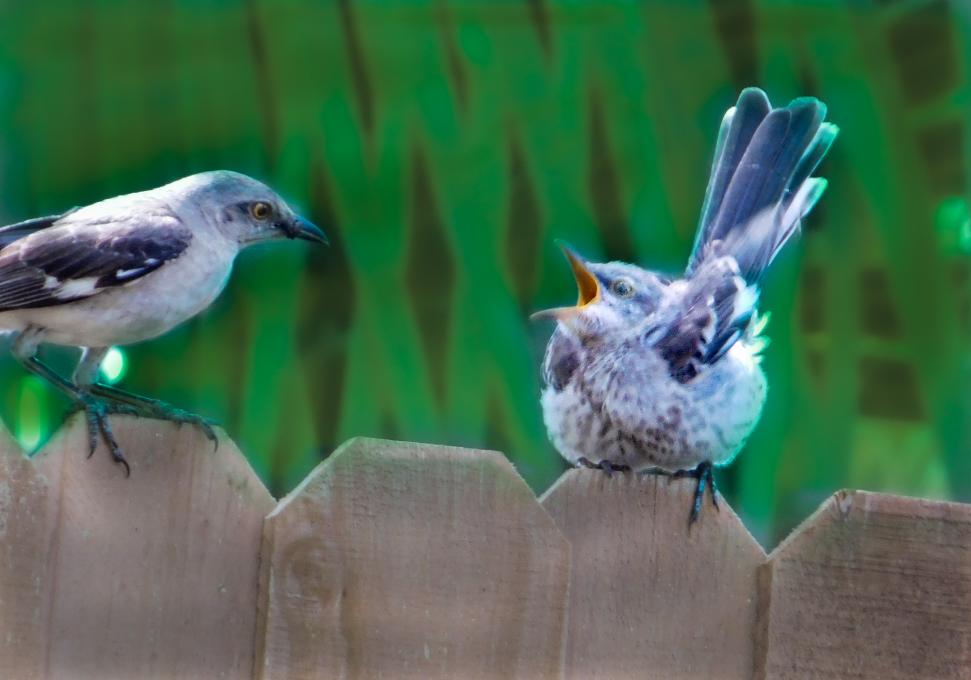
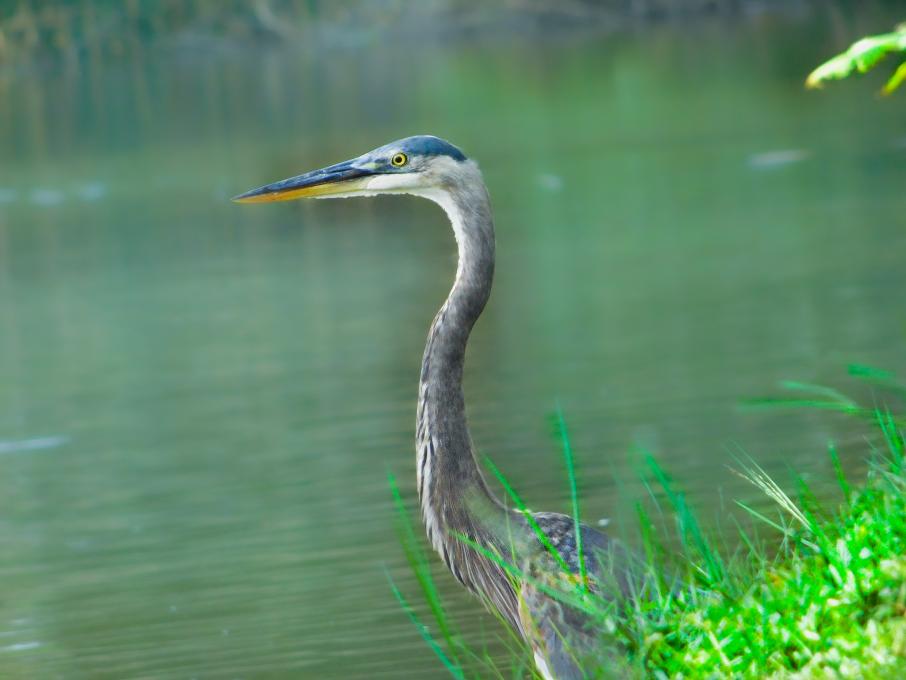
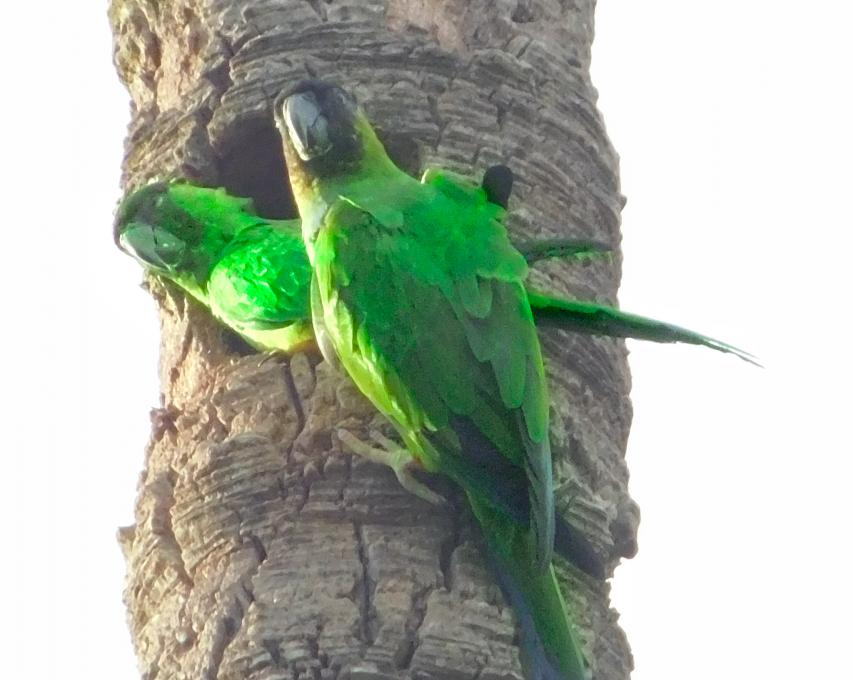
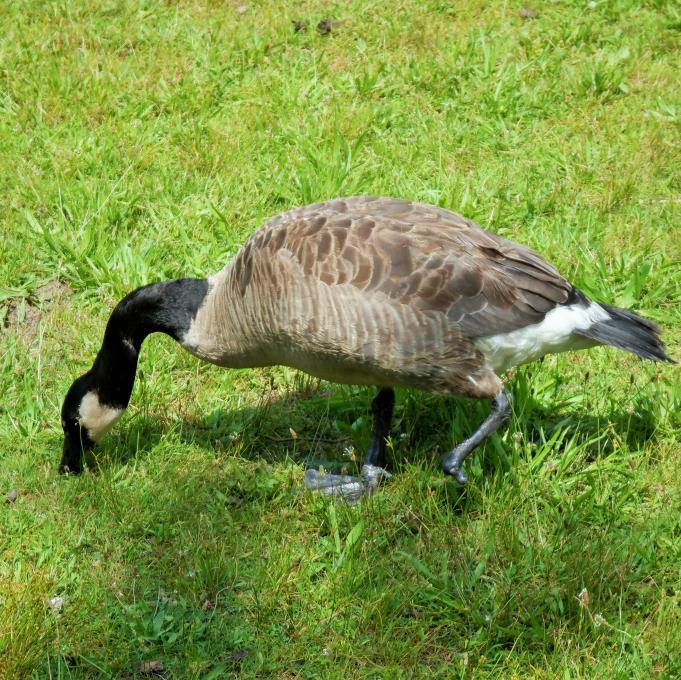
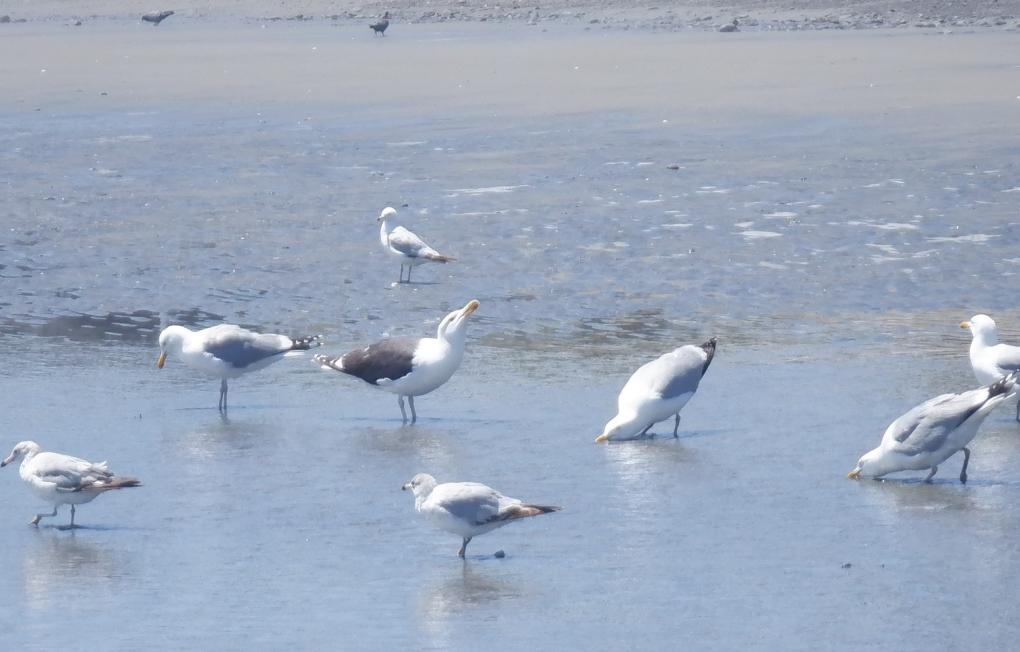 These are some of the birds in the neighborhoods, I have walked in. The Canada Goose, with one foot, was hopping and surviving. Foraging. Poor Thing.
And the SeaGulls are at the beach, drinking the water, and 'in a mingle.' I never knew they drank water like that, it looks interesting.
These are some of the birds in the neighborhoods, I have walked in. The Canada Goose, with one foot, was hopping and surviving. Foraging. Poor Thing.
And the SeaGulls are at the beach, drinking the water, and 'in a mingle.' I never knew they drank water like that, it looks interesting. 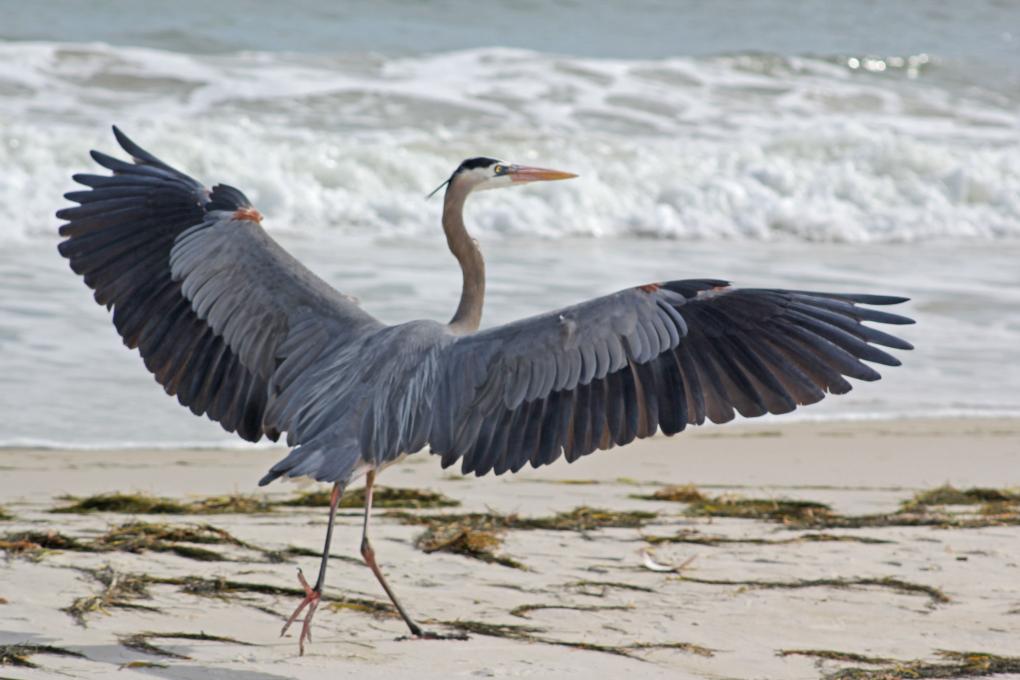 This is a favorite photo of the great blue heron. I actually photographed several members of a group standing close to some people surf fishing. Herons are usually solitary fishers, but will take what human fishers by the water don't use.
A close relative of this heron is the great egret (ardea alba), a beautiful white wading bird. I live within a 2-hour drive of a place called Reelfoot Lake in northwest Tennessee, which is teeming with birds, from terns to bald eagles. Below, an egret.
This is a favorite photo of the great blue heron. I actually photographed several members of a group standing close to some people surf fishing. Herons are usually solitary fishers, but will take what human fishers by the water don't use.
A close relative of this heron is the great egret (ardea alba), a beautiful white wading bird. I live within a 2-hour drive of a place called Reelfoot Lake in northwest Tennessee, which is teeming with birds, from terns to bald eagles. Below, an egret.
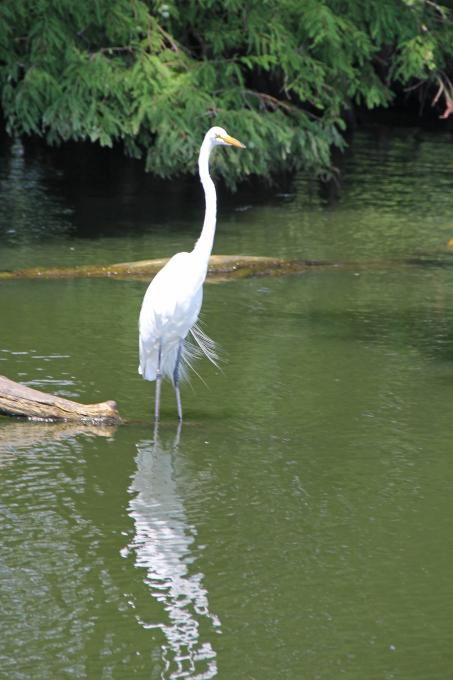 In recent decades, Reelfoot has become known for eagle-watching. A few bald eagles were wintering at the lake in the 60s and 70s. Now, there's an abundance of nesting pairs. Ospreys, too. Plenty of fish for both raptors and waders.
I live near Memphis, on the edge of the urban area, in a neighborhood with a lot of mature native trees. Plenty of deer, and a lot of birds I hear in my back yard, where the trees are dense around an intermittent creek that drains the area. It's hard to see them this time of year. But cardinals are abundant and their plumage make them easy to spot. I've been surprised 3-4 times in the 15 years I've lived here by hearing the calls of barred/hoot owls outside. I've immediately gone to sit on the back porch and listen to the back-and-for calls of one nearby and one distant owl. In fact there's a lot of bird music right here, and one of my goals is to acquire a much greater ability to identify birds by their songs and calls.
Jays, Red-tailed and red-shouldered hawks, sparrows, wrens, vireos, eastern bluebirds (often seen in pairs) are a few. There's a small lake in a park nearby where I ride around a half-mile track a few times in the course of a longer bicycle ride. I often see my beloved great blue herons, always solitary. And green herons make appearances there too, along with bluebirds. All of them are sources of delight to me. There must be at least a hundred species I have no idea of, so I have the joy of learning some of them to look forward to.
In recent decades, Reelfoot has become known for eagle-watching. A few bald eagles were wintering at the lake in the 60s and 70s. Now, there's an abundance of nesting pairs. Ospreys, too. Plenty of fish for both raptors and waders.
I live near Memphis, on the edge of the urban area, in a neighborhood with a lot of mature native trees. Plenty of deer, and a lot of birds I hear in my back yard, where the trees are dense around an intermittent creek that drains the area. It's hard to see them this time of year. But cardinals are abundant and their plumage make them easy to spot. I've been surprised 3-4 times in the 15 years I've lived here by hearing the calls of barred/hoot owls outside. I've immediately gone to sit on the back porch and listen to the back-and-for calls of one nearby and one distant owl. In fact there's a lot of bird music right here, and one of my goals is to acquire a much greater ability to identify birds by their songs and calls.
Jays, Red-tailed and red-shouldered hawks, sparrows, wrens, vireos, eastern bluebirds (often seen in pairs) are a few. There's a small lake in a park nearby where I ride around a half-mile track a few times in the course of a longer bicycle ride. I often see my beloved great blue herons, always solitary. And green herons make appearances there too, along with bluebirds. All of them are sources of delight to me. There must be at least a hundred species I have no idea of, so I have the joy of learning some of them to look forward to. 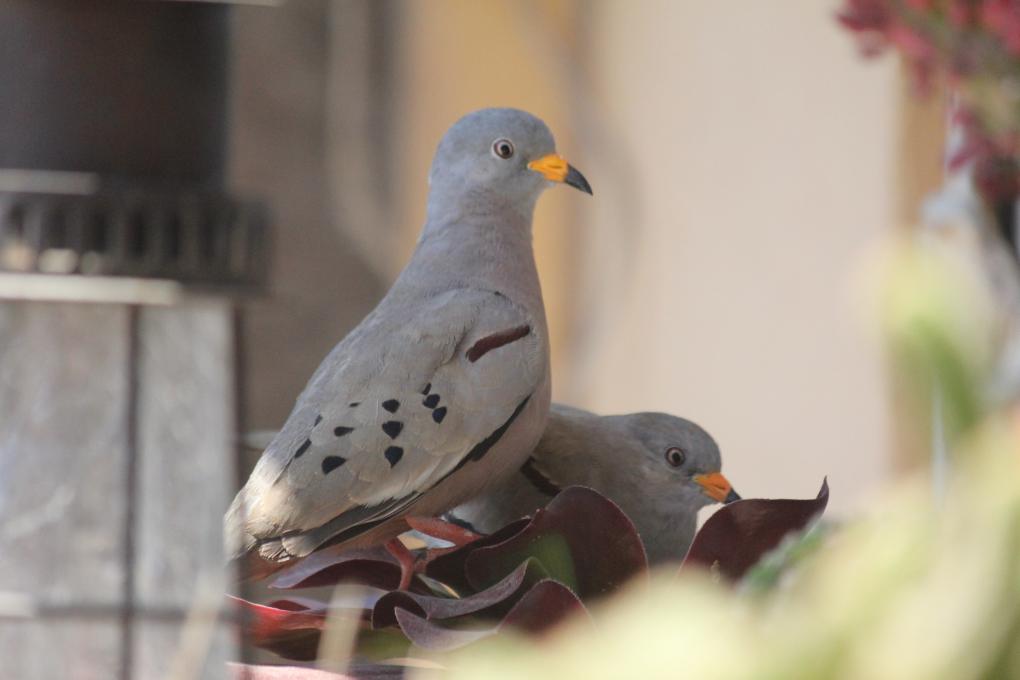
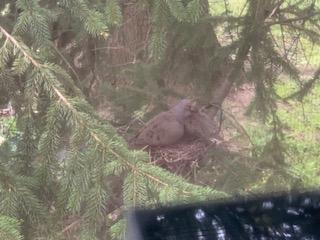
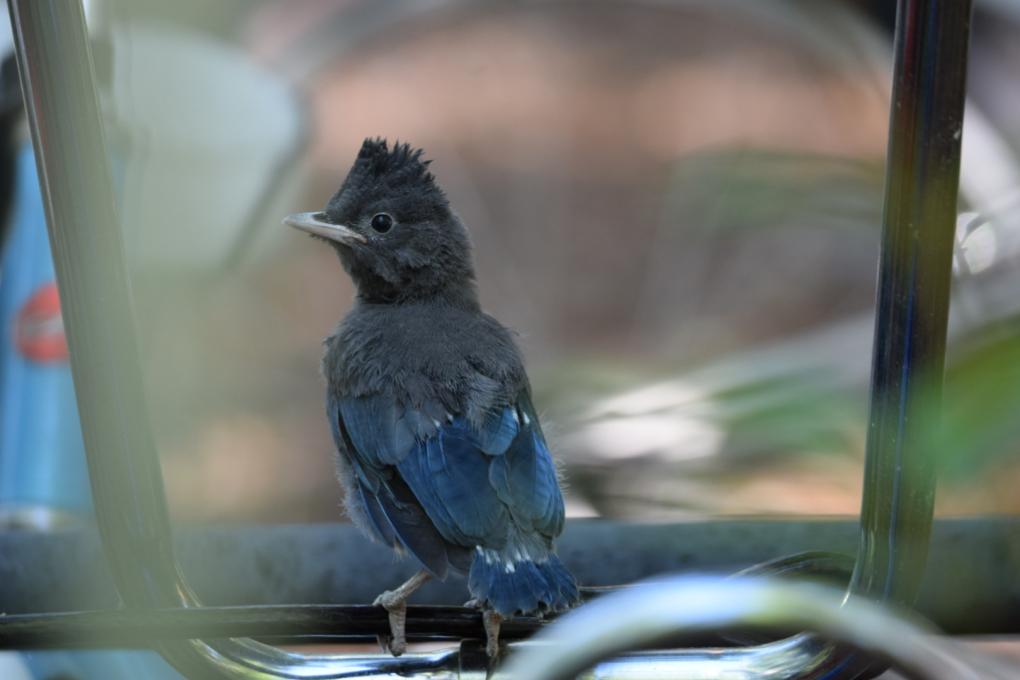
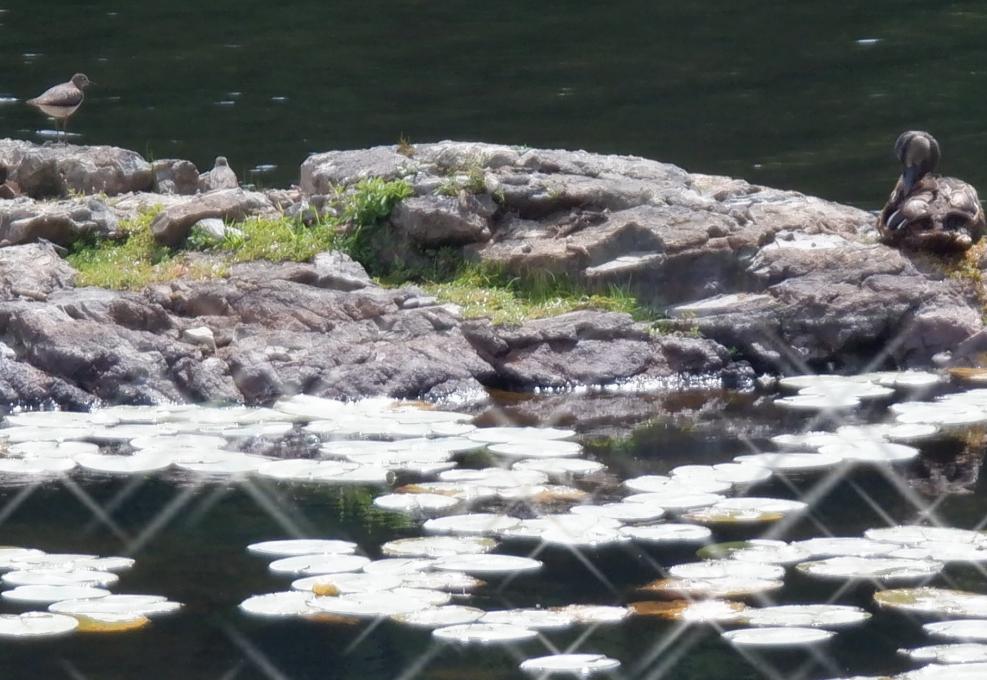
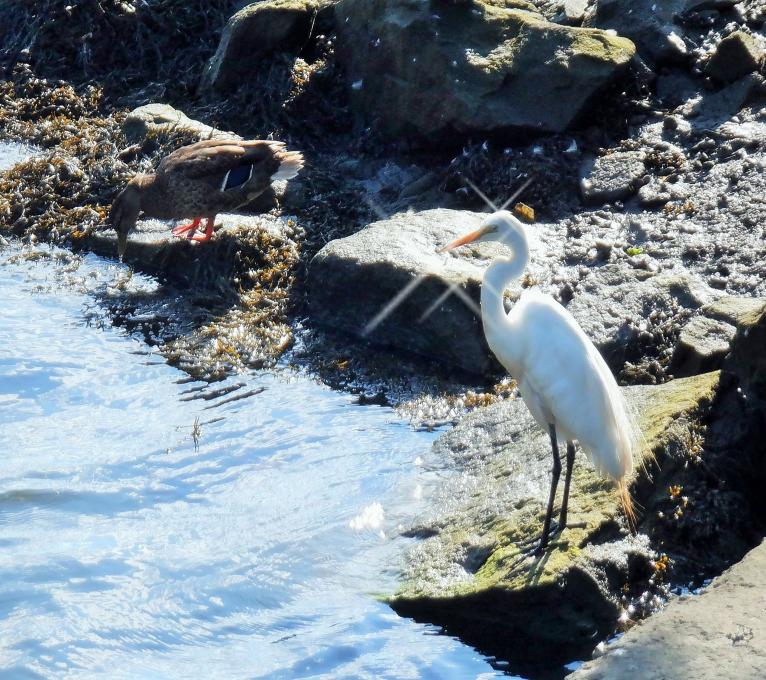 The three types of birds, are : Duck/Waterfowl. White Heron/Waterbird-Wading Bird. And the Shorebirds/Pipers.
The pictures were taken today, 8/6/20. I have noticed some birds are very flighty, and some are not. The Heron flew away after the pictures, but the ducks did not. -b.k. All these birds connected to the water, but differently.
The three types of birds, are : Duck/Waterfowl. White Heron/Waterbird-Wading Bird. And the Shorebirds/Pipers.
The pictures were taken today, 8/6/20. I have noticed some birds are very flighty, and some are not. The Heron flew away after the pictures, but the ducks did not. -b.k. All these birds connected to the water, but differently. 